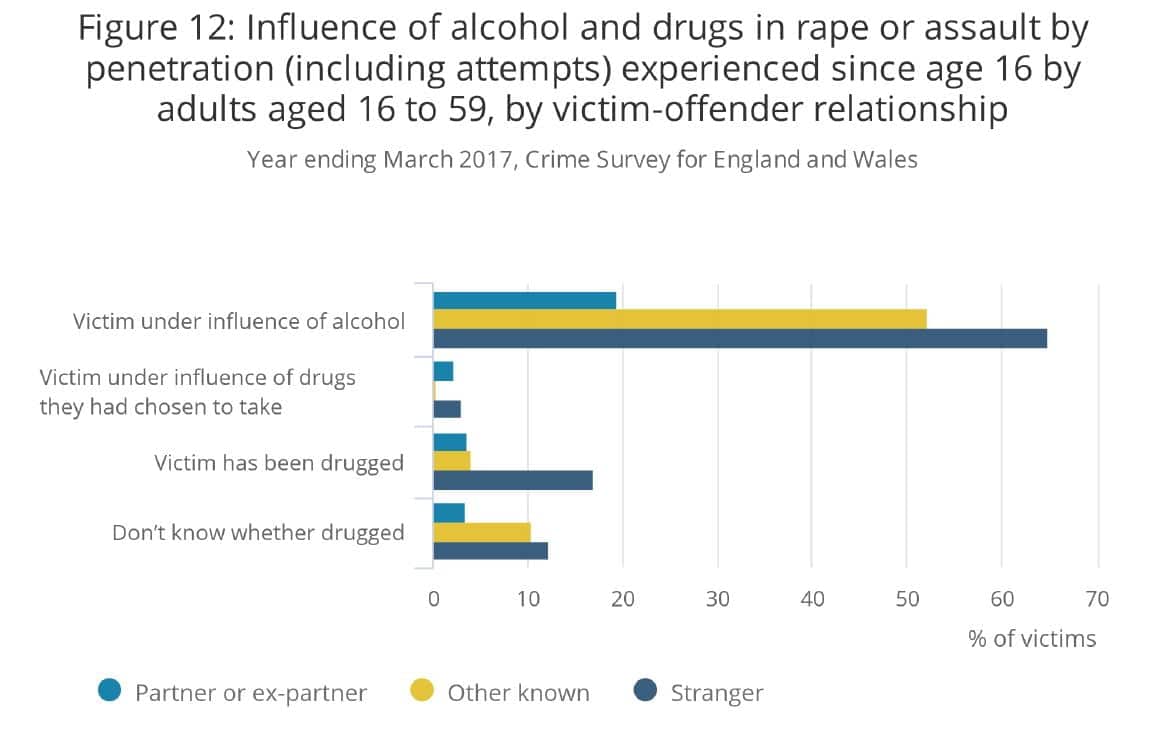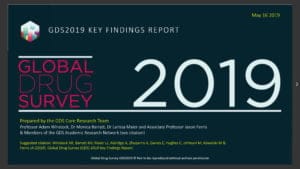83% do not report being sexually assaulted
Earlier this month (8 February 2018), the Office for National Statistics published a new article:
Sexual offences in England and Wales: year ending March 2017
These are the headline findings:
The Crime Survey for England and Wales (CSEW) is the preferred measure of trends in the prevalence of sexual assault since this is unaffected by changes in police activity, recording practices and propensity of victims to report such crimes.
The CSEW estimated that 20% of women and 4% of men have experienced some type of sexual assault since the age of 16, equivalent to an estimated 3.4 million female victims and 631,000 male victims.
An estimated 3.1% of women (510,000) and 0.8% of men (138,000) aged 16 to 59 experienced sexual assault in the last year, according to the year ending March 2017 CSEW; no significant change from the previous year’s survey.
There has been no significant change in the prevalence of sexual assault measured by the CSEW between the year ending March 2005 (2.6%) and the year ending March 2017 (2.0%) surveys.
The CSEW showed that around 5 in 6 victims (83%) did not report their experiences to the police.
The increase in sexual offences recorded by the police is thought to be driven by improvements in recording practices and a greater willingness of victims to come forward to report such crimes, including non-recent victims.
Measurement of sexual assault
Sexual assaults measured by the CSEW cover rape or assault by penetration (including attempts), and indecent exposure or unwanted touching. They are measured as part of the self-completion module on domestic abuse, sexual assault and stalking.
The use of self-completion on tablet computers to collect such information allows respondents to feel more at ease when answering these sensitive questions, due to increased confidence in the privacy and confidentiality of the survey. While some questions are asked about sexual assaults in the face-to-face section of the interview, a very small number are willing to disclose such sensitive incidents to the interviewer. Therefore, these figures are too unreliable to report and these data are excluded from the headline CSEW estimates. The self-completion section of the survey provides the most reliable source of CSEW data on sexual assaults.
There are two headline measures of sexual assault in the CSEW: one relates to experiences since the age of 16 and the other is limited to those experiences in the 12 months prior to interview.
An additional self-completion module asking victims about the nature of incidents of rape or assault by penetration (including attempts) experienced is included in the CSEW on a rotating basis. This module was included in the year ending March 2017 CSEW, the first time in three years that the module has been run. Findings from this module are included in this article.
Unlike estimates from face-to-face interviews, estimates from the self-completion module are not affected by the current method of handling high-frequency repeat victimisation, which caps the number of reported incidents at five. Self-completion modules provide estimates of victims rather than incidents, and no cap is applied to this data.
One of the strengths of the CSEW is that it covers many crimes that are not reported to the police. The under-reporting of crime to the police is known to be particularly acute for sexual offences, with many more offences committed than are reported to and recorded by the police. The CSEW provides reliable estimates of the prevalence of sexual assaults using a consistent methodology that is not affected by changes in recording practices and police activity or by changes in the propensity of victims to report to the police.
Gender differences
As in previous years, women were significantly more likely to have experienced sexual assault in the last year than men (3.1% compared with 0.8%). This is true for all types of sexual assault, with the exception of sexual assault by a family member, where there was no significant difference. The year ending March 2017 CSEW showed that in the last year:
indecent exposure and unwanted sexual touching was experienced by around three times as many women as men (2.7% compared with 0.8%)
fewer than 0.1% of men had experienced rape or assault by penetration (including attempts) compared with 0.9% of women
Age
Those in the younger age groups were more likely to be victims of sexual assault than those in the older age groups. The prevalence of sexual assault decreased as age increased, and this was true for both men and women.
Those aged 16 to 19 and aged 20 to 24 were significantly more likely to be victims of sexual assault in the last 12 months than any other age group. This was true for indecent exposure or unwanted touching, but there was no significant difference between those aged 20 to 24 and those aged 25 to 34 for rape or assault by penetration (including attempts).
Alcohol-and drug-related
Respondents who reported they had been victims of rape or assault by penetration since they were 16 were asked whether they thought the offender (or offenders) was under the influence of alcohol or drugs and whether they were under the influence of alcohol or drugs themselves at the time of the incident.
In their most recent rape or assault by penetration (including attempts), 38% of victims reported that the offender(s) were under the influence of alcohol. The same proportion of victims (38%) said they were under the influence of alcohol themselves.
Fewer victims reported that the offender was under the influence of drugs (8%) and that they themselves were under the influence of drugs they had chosen to take (2%). In addition, 6% of victims reported that they thought that the offender had drugged them during the last incident of rape or penetration (including attempts) they had experienced.
More victims were under the influence of alcohol when the offender was a stranger (65%) compared with when the offender was a partner or ex-partner (19%). A similar pattern was evident for whether the victim thought the offender had drugged them – 17% when the offender was a stranger, 4% when the offender was a partner or ex-partner.

Measuring social impact
Our cutting-edge approach to measurement and evaluation is underpinned by robust methods, rigorous analyses, and cost-effective data collection.
Proving Social Impact
Get the Data provides Social Impact Analytics to enable organisations to demonstrate their impact on society.











